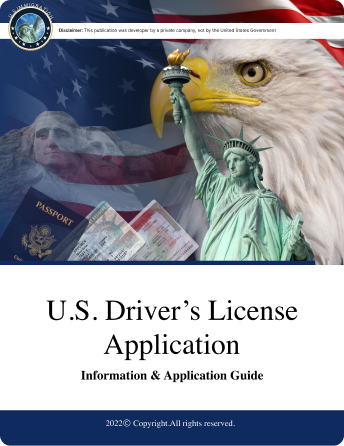United States Immigration Services
Online Guide to U.S. Visas, ESTA, Green Cards & More
United States Immigration Services is a major publisher of immigration guides and legal eBooks. Our do-it-yourself immigration guides are designed to assist immigrants in navigating the complicated United States immigration system. We strive to provide the best information about immigration to the United States.
U.S. Driver’s License Application
Download
The primary form of identification in the United States is a driver's license, or state ID. The United States driver's license is an official government-issued ID which allows the bearer of the license to drive a motor vehicle. Driver's licenses can be used for many other purposes, including opening bank accounts, cashing checks, traveling within the United States, or as proof that you are of legal age to purchase alcohol and tobacco. Although a State ID may be used for identification purposes, it cannot be used to drive a motor vehicle. The United States federal government doesn't issue a national driver’s license or identification card, unlike other countries. Each state in the United States issues its own driver's license and ID. They can be used in any part of the United States, Canada or abroad. The U.S. Drivers License Application Guide is available. Download the U.S. Driver's License Application Guide to learn how to apply for a U.S. driver's license.
- Start Application Immediately
- Easy to Understand Instructions
- Apply Online or by Mail
- Pricing and Fee Information Included
- Checklist of Required Documents
- Unlimited Online Support
What's included
What's included
- To obtain your first US driver’s license, you will need to have proof of identification
- Transfer of a driver’s license from another country
- Transfer of an out-of-state drivers license is not allowed
- Drivers license renewal requirements
- Particular application procedures are available for each of the 50 US States
- Information regarding the vision, written and road tests
- Information about proof of legal immigration status
- For identification purposes, lists of primary and second forms are required
- Explanation of the differences between driver’s licenses & state identification cards
